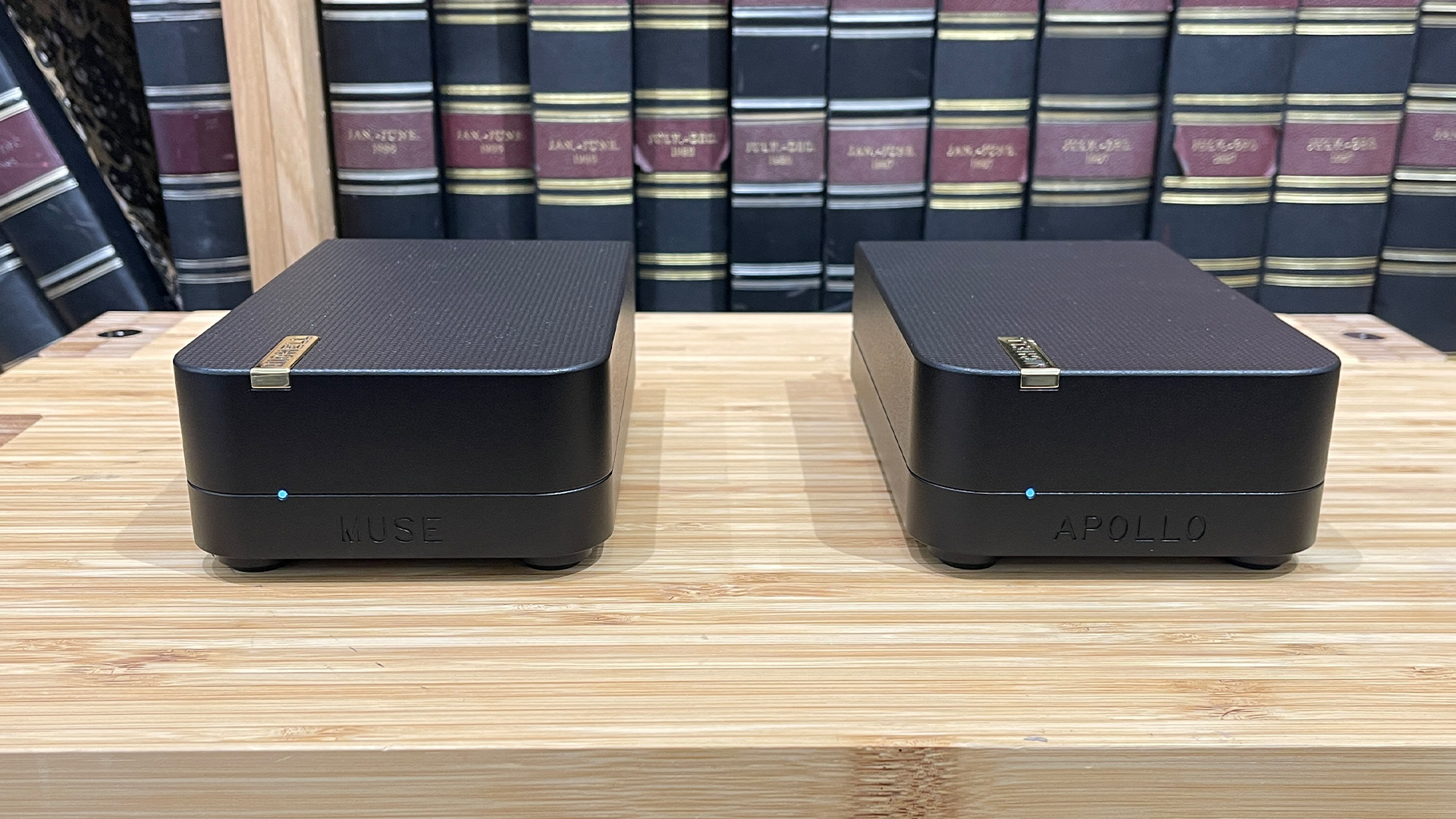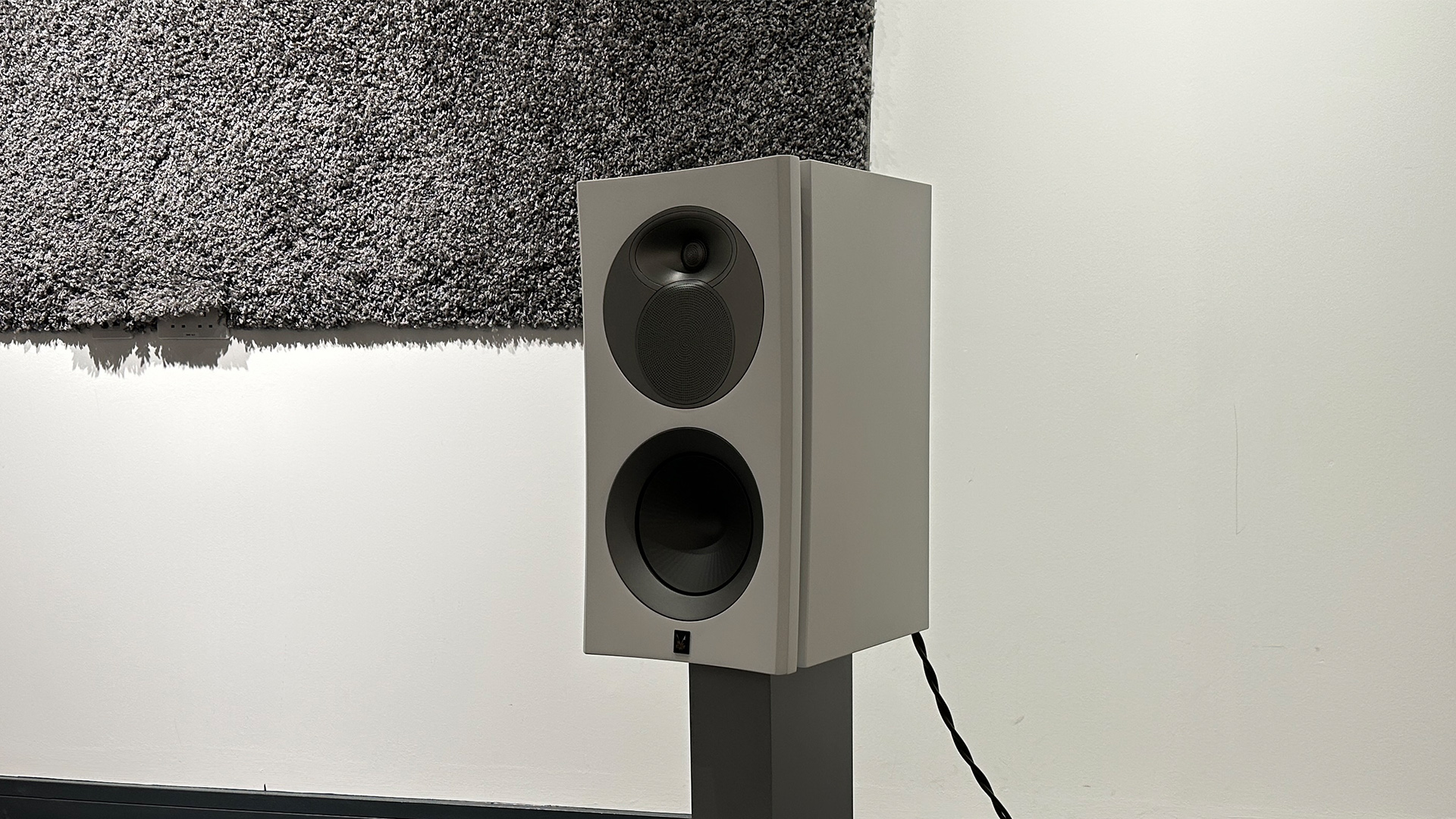What Hi-Fi? Verdict
The Michell Apollo phono stage is a sweet and natural-sounding phono stage that’s capable of sonic magic
Pros
- +
Sumptuous, insightful and fluid presentation
- +
Excellent musical cohesion
- +
Low noise levels
- +
Excellent build and finish
Cons
- -
Demands a top-quality record player and system
Why you can trust What Hi-Fi?
When we think of Michell Audio, it's always the company’s strikingly styled turntables that come to mind. The likes of the Gyrodec and Orbe are deeply woven into the fabric of British high-end turntables, and deservedly so. Both models have been on the market for decades, yet their combination of engineering, aesthetics and sound quality remains hard to beat.
The brand has always made more than just turntables, of course. Michell’s current range includes tonearms, cartridges and various accessories, but what often gets forgotten is that it has a history of making electronics too. We’re not talking about the numerous upgrade power supplies made for its record players over the years, either.
Michell made an unexpected foray into the world of premium amplifiers that started at the tail end of the ’80s. Over the next decade or so, it produced exceptional preamps (the Argo, Argo HR and Orca) and the ever-so-capable Alecto power amplifier (that was available in both stereo and mono form). There was also the Iso, one of the first standalone phono stages on the UK market and now, sadly, something of a forgotten gem.
So Michell has previous experience in phono stages, and that gives the new Apollo a foundation to build on. And build it does, even though there is precious little in common between the two designs bar their purpose and compact form factor.
Build & design
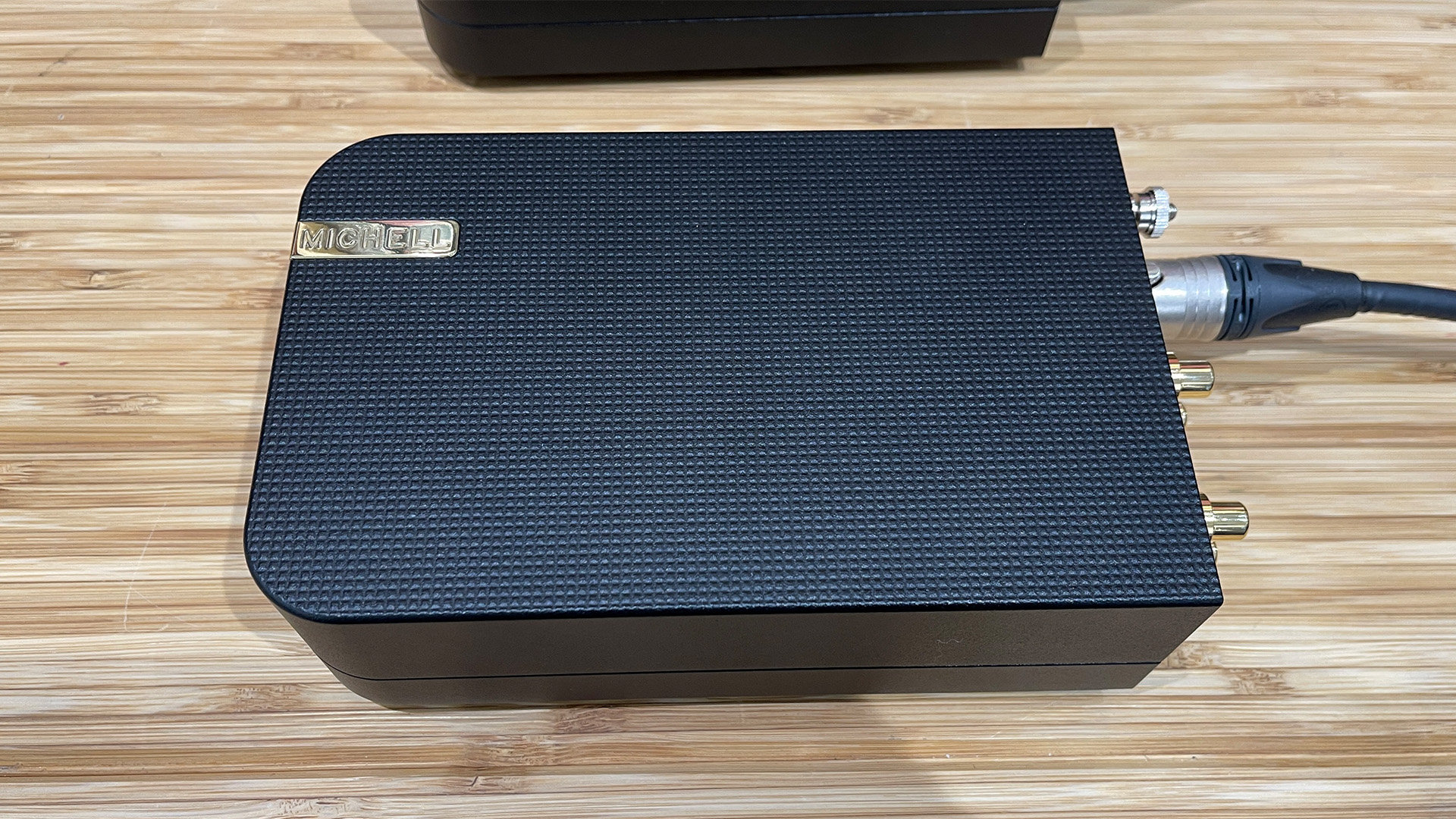
The Michell Apollo is part of a two-box package that includes the Muse power supply. The phono stage and supply are built into identical-looking aluminium cases and connected via a short umbilical cable.
This casework is beautifully made, impressively rigid and feels wonderfully dense. It is machined from a solid billet of aluminium, and there is some nice detailing, such as the grid texture on the top panel and the gold branding.
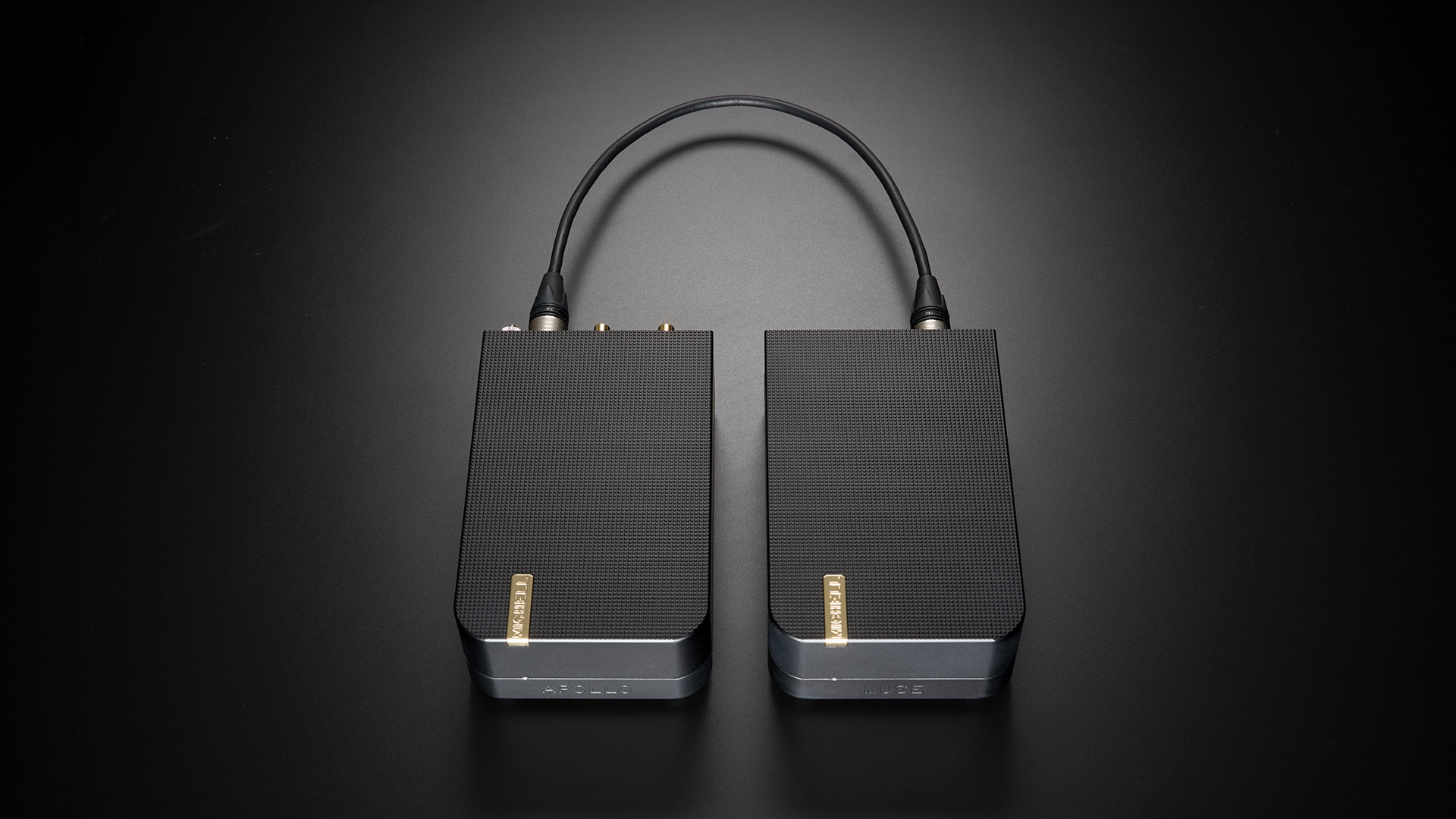
Moving magnet? Yes
Moving coil? Yes
Cartridge loading adjustment? Yes
Remote control? No
Dimensions (hwd) 60 x 115 x 280mm (both units)
Weight 3kg
Inside the Apollo, you will find a passive RIAA equalisation circuit that is optimised to improve transparency, as well as Class A gain stages and additional power supply circuitry that works in conjunction with the Muse. The company hand-matches critical capacitors in the circuit to ensure the phono stage’s tight channel tolerances are maintained.
The latest hi-fi, home cinema and tech news, reviews, buying advice and deals, direct to your inbox.
The Muse power supply uses a low-noise toroidal transformer, capacitor multiplier technology and high-grade voltage regulators to reduce supply ripple and noise. The result is a pair of highly filtered and regulated DC outputs that give the sophisticated circuitry in the Apollo every chance to shine.
Of course, housing the mains transformer in a separate box, well away from the delicate cartridge signal, is always a good thing, given the reduction of noise, vibration and hum it brings.
Even the short cable between the Apollo and Muse is carefully considered, using silver-plated, oxygen-free copper conductors wrapped with cotton fibres to reduce mechanical noise and covered with FEP (Fluorinated Ethylene Propylene) insulation. The terminals are ChorAlloy XLR connectors.
Features & compatibility
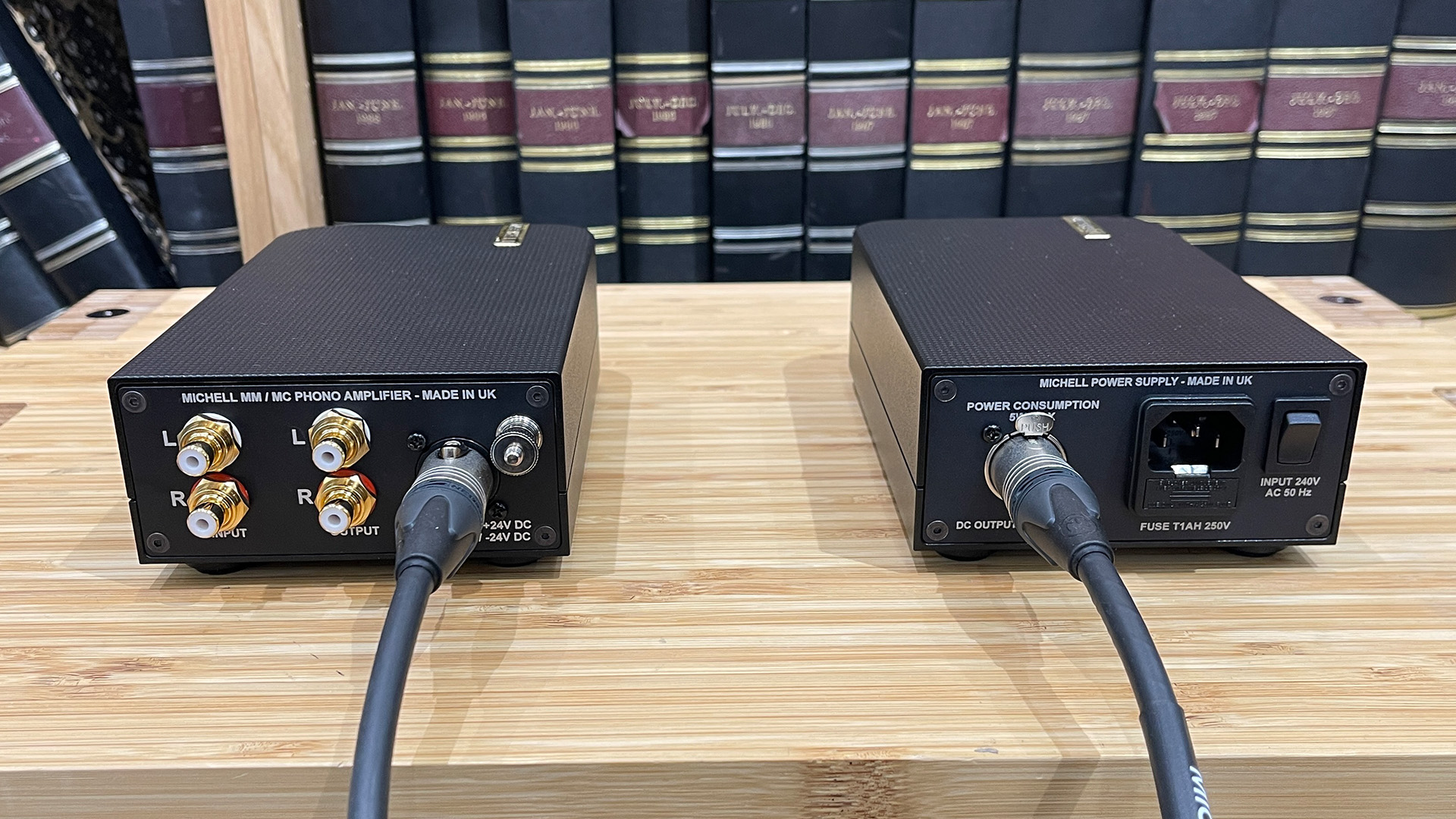
The Apollo is a pretty straightforward unit when it comes to features. There are no multiple inputs in the fashion of Cyrus’s 40 PPA phono stage, nor balanced outputs or a remote control. This product deals in the essentials: one phono input and a single-ended stereo RCA output are the sum of its connectivity.
The sockets are excellent quality, mind, and the earthing post is sensibly sized, so even those with thick fingers can tighten it easily.
There is a choice of cartridge loading options, of course. These are selected by a series of dipswitches on the base of the phono stage and hidden behind a removable flap. The resistance range is sensible at 33 ohms to 47 kOhms, while gain can be set from 40 to 73dB. Capacitance is fixed at 100pF.
This range of adjustment means that the Apollo should be happy with just about any cartridge on the market, even very low-output moving coils.
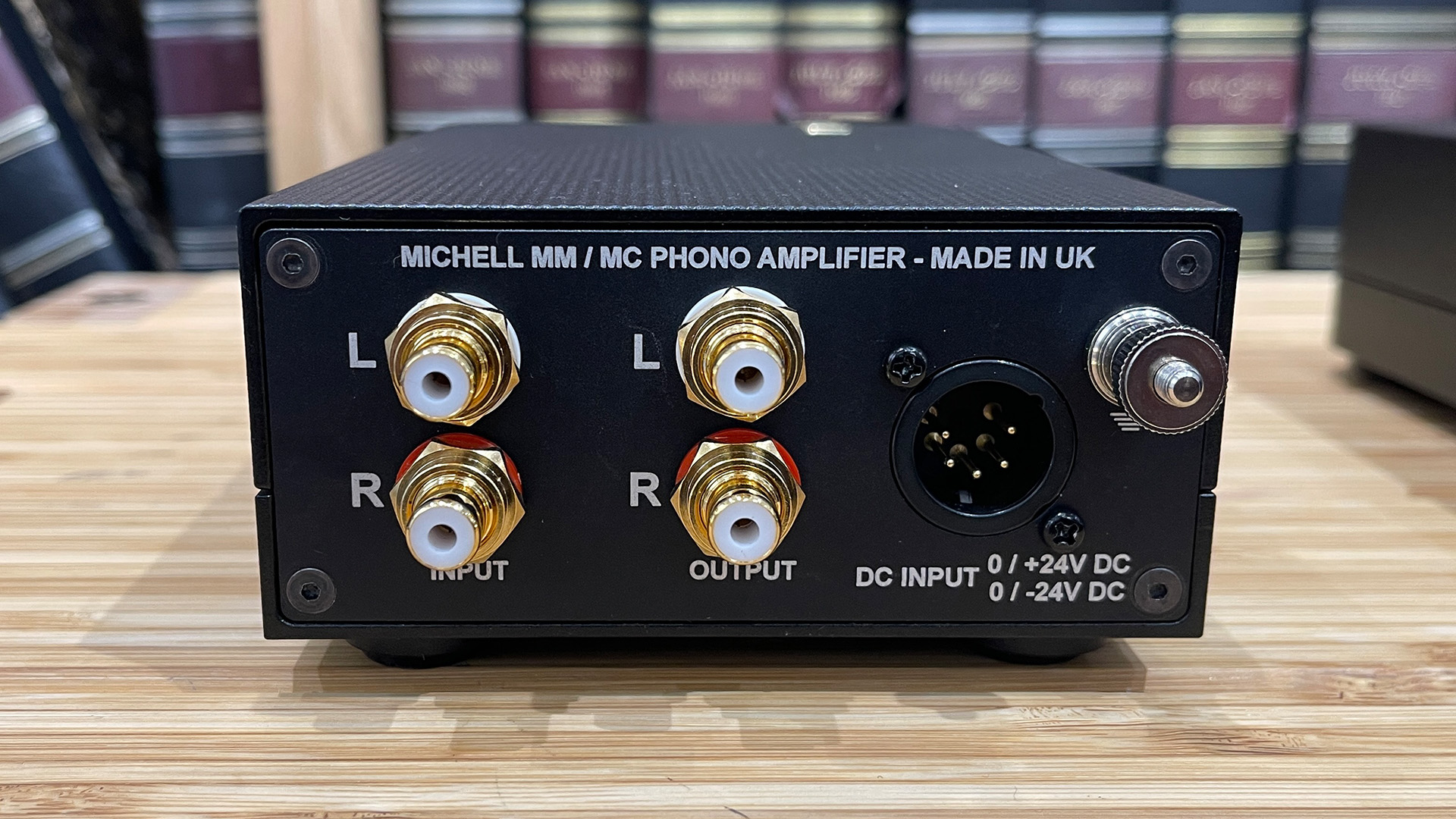
A phono stage at this level positively demands a top-class partnering system. We feed the Michell with our reference Technics SL-1000R turntable fitted with a range of cartridges from the Nagaoka MP-200 and Vertere Dark Sabre moving magnets to the Ortofon MC X30 and Kiseki Purpleheart moving coils.
The rest of the system is our usual Burmester 088/911 MkIII amplifier and ATC SCM50 speakers. We also try the Apollo with the PMC Cor integrated and Epos ES14N speakers to hear how it sounds in a different flavour of system.
Our comparison phono stages are the pricier Cyrus 40 PPA/40 PSU combination and Vertere’s cheaper but excellent Phono-1 MkII L.
Sound
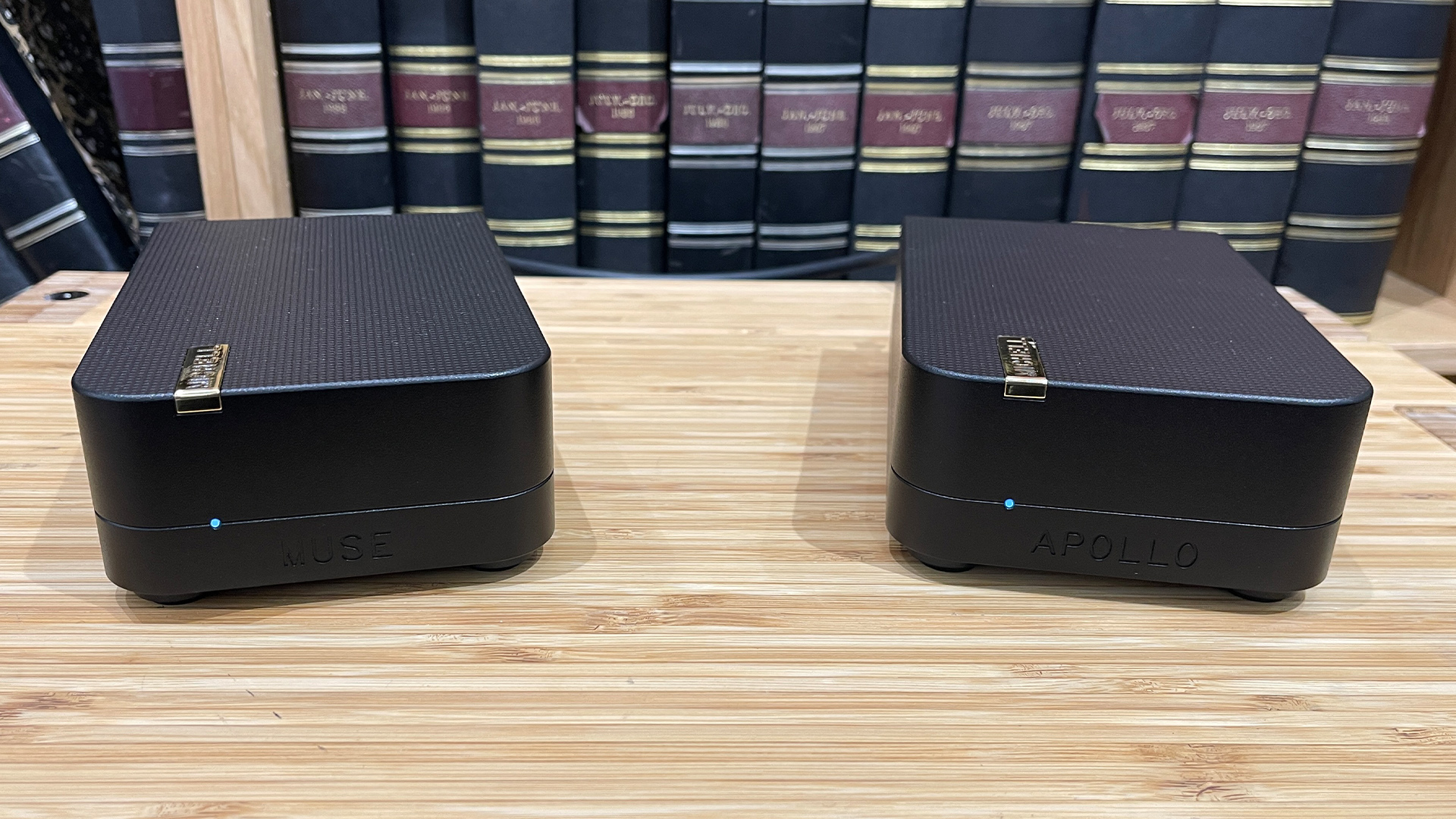
The Michell Apollo is a great-sounding unit regardless of the partnering system. Its character is unusually fluid, reminding us of the naturalness of the very best valve phono stages we’ve heard, but adding the control and grip that is very much transistor in nature. And it sounds quiet, delivering a wonderfully dark canvas for the sound to grow from.
As we listen to Orff’s Carmina Burana, it is the sense of space in the presentation we notice first. Few rivals sound as large scale and open as this. We love the way the Michell renders the soundstage, which is expansive, uncluttered and wonderfully precise in focus. The stereo imaging is impressively stable and stays that way regardless of the music’s demands.
Anyone familiar with this Orff piece knows just how frenzied it can be, and the Apollo isn’t upset by this one bit. This phono stage is a calm performer that can track the music’s exuberant dynamic shifts with confidence.
There is no shortage of muscle here, but it is underpinned by class-leading composure and control.
We have no complaints about the Apollo’s insight. There is plenty of detail here, from crisply defined leading edges to lush instrumental textures and the kind of low-level acoustic information that defines the size and characteristic of the recording venue.
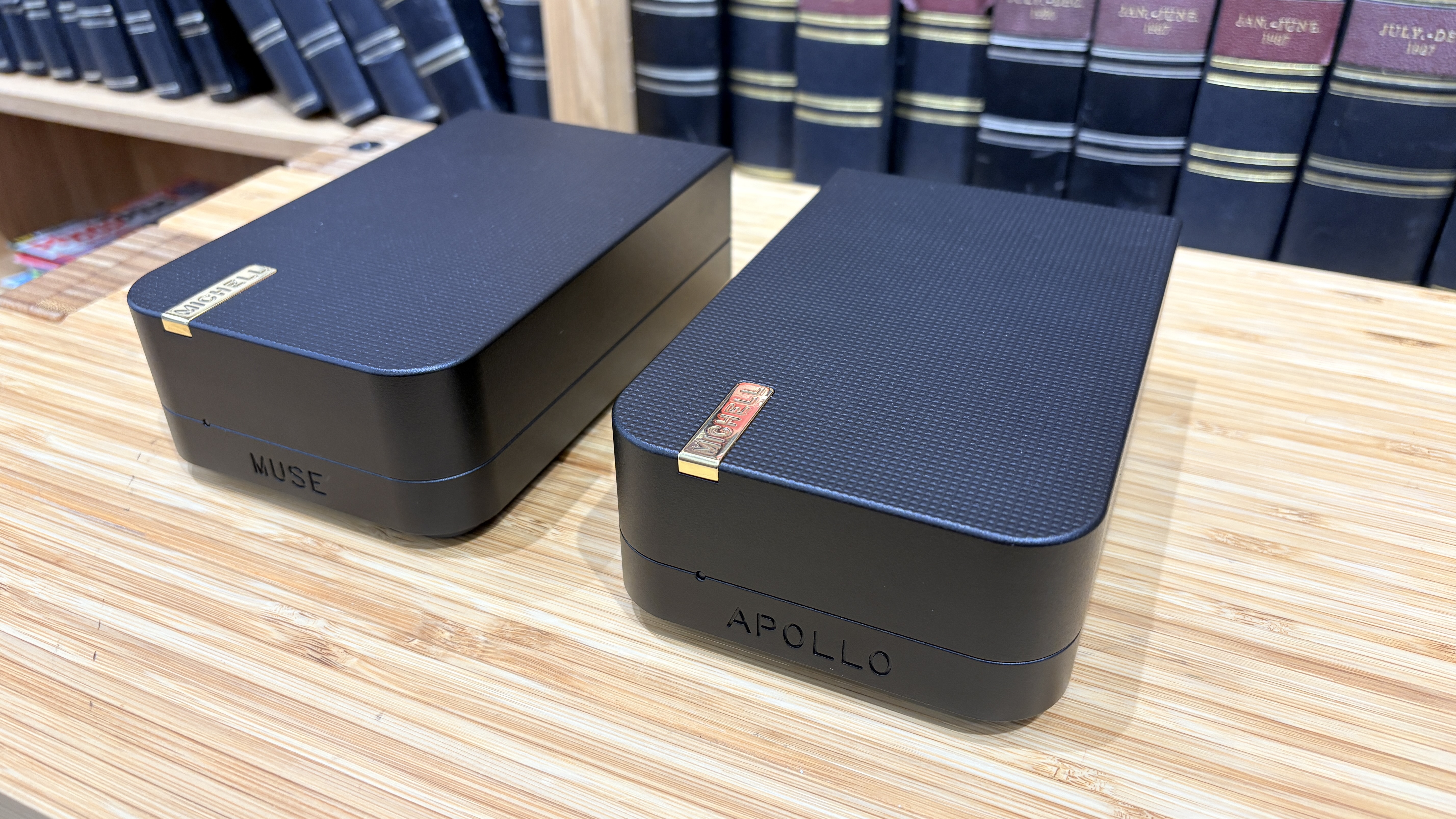
It is important to note that this isn’t a product that shows off by putting a spotlight on the leading edges of notes. It is far subtler than that, and more organic in the way detail is rendered.
The result is a natural, full-bodied balance that pulls the listener into the music rather than focusing attention on the mechanics of hi-fi.
This Michell certainly has sonic character. It has a smooth and rich nature, but doesn’t err too far. This forgiving balance makes it reassuringly accommodating about recording quality and partnering equipment.
Don’t take that to mean that you can partner this phono stage with any old budget turntable, as that simply is not the case. It remains highly transparent to the source, but its sweet character prevents it from making a meal of things.
The Apollo doesn’t favour any particular kind of music, either. It sounds as capable with electronica such Four Tet’s There Is Love In You as it does Kind Of Blue by Miles Davis. There is a surefooted way with rhythms and the ability to track multiple instrumental strands while still producing a cohesive and musical sound.
Lows are authoritative and agile, while midrange clarity is of a high order so that the likes of Mary J Blige and Billie Eilish can shine.
Verdict
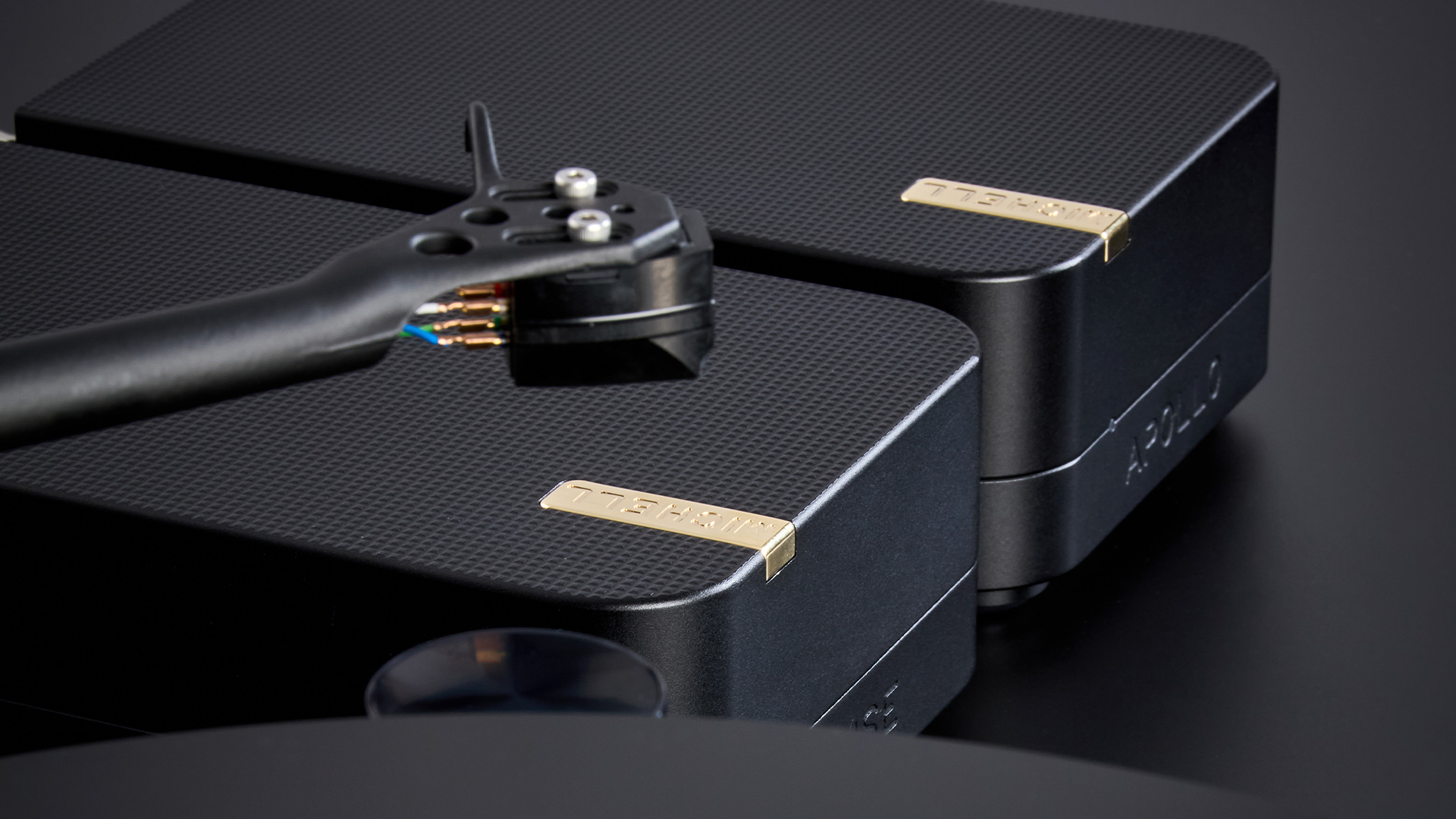
The competition is tough, but the Apollo’s formidable blend of talents is hard to resist. Its unfussy attitude, seductive sound and excellent build make it one of the standout options in this part of the market.
Michell may be best known for its turntables, but once again, it proves a dab hand at electronics too.
Review published: 27th October 2025
SCORES
- Sound 5
- Build 5
- Features 4
MORE:
Read our review of the Cyrus 40 PPA/40 PSU
Also consider the Luxman EQ-500
Read our Vertere Phono-1 Mk II L review
Best phono preamps: budget to high-end, tried and tested

Ketan Bharadia is the Technical Editor of What Hi-Fi? He has been reviewing hi-fi, TV and home cinema equipment for almost three decades and has covered thousands of products over that time. Ketan works across the What Hi-Fi? brand including the website and magazine. His background is based in electronic and mechanical engineering.
- Kashfia KabirHi-Fi and Audio Editor
You must confirm your public display name before commenting
Please logout and then login again, you will then be prompted to enter your display name.
